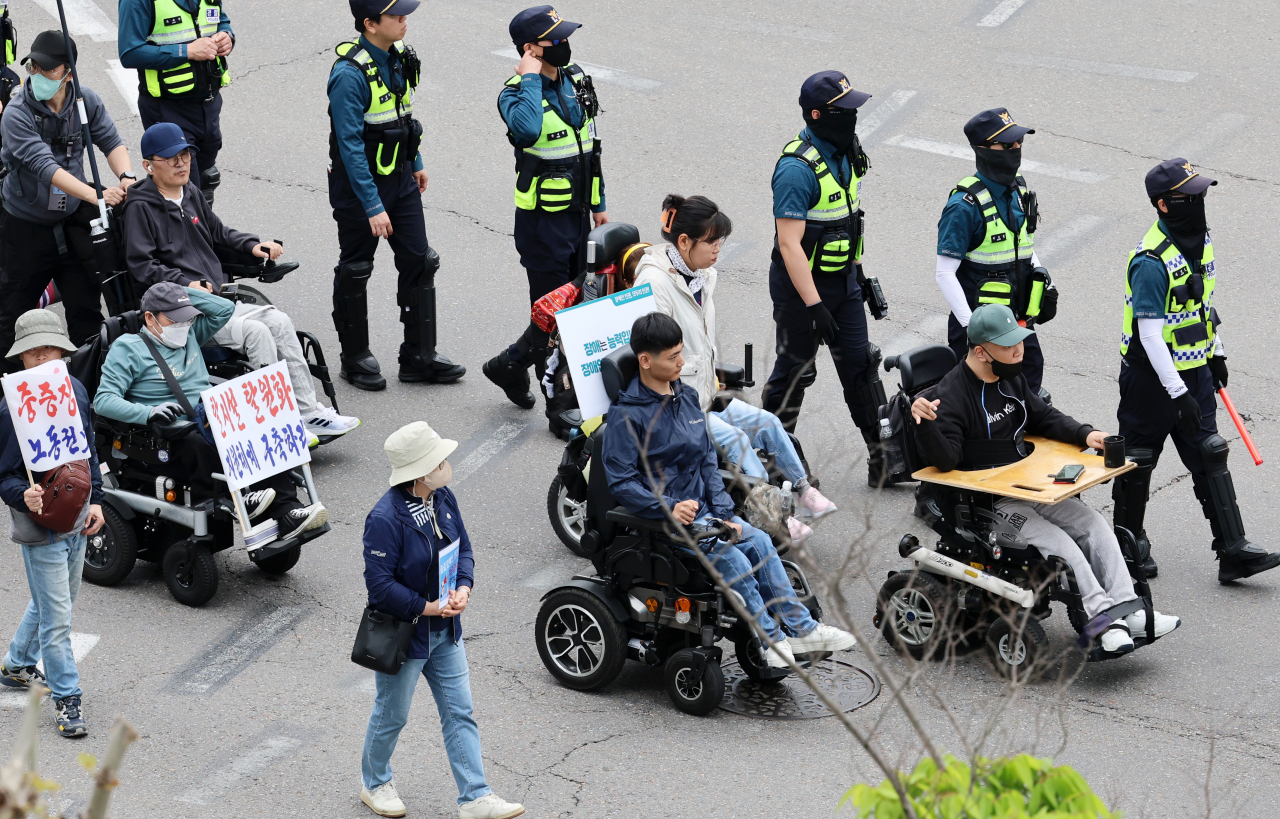Around 50% of people with disabilities aged 65 or above: report
By Lee Jung-jooPublished : April 30, 2024 - 15:46

As South Korea is predicted to soon become a super-aged society, more than half of the population with disabilities were found to be age 65 or above for the first time in 2023, said the Ministry of Health and Welfare on Tuesday.
According to the Health Ministry’s report released on Tuesday, up to 2.65 million of the total population were registered as having some sort of disability. The total population was 51.71 million as of last year according to Statistics Korea.
Out of the number of people with a registered disability, 54.3 percent were found to be 65 years old or above, a 4.4 percentage point increase compared to the last report released in 2020.
The Health Ministry has conducted a survey on the demographics, health and daily lives of people with disabilities every three years since 2005 according to the Act on Welfare of Persons with Disabilities.
“The percent of older people who have a disability is about three times more than the percent of older people in the total population in 2023,” said an official from the Health Ministry’s Division of Policy for Persons with Disabilities.
In 2023, those who are 65 or older made up 18.2 percent of Korea’s total population numbers, according to the Health Ministry.
Additionally, the Health Ministry revealed through its report that the average household number for those with disabilities was 2.28, with single-person household numbers among those with disabilities reaching up to 26.6 percent.
It was also found that most people with disabilities suffer from chronic conditions, as those aged 19 and up suffer from conditions such as high blood pressure and diabetes. On average, 2.5 chronic conditions were found for each person with a disability.
Among disabled people aged 30 and up, 52.9 percent of them were found to have high blood pressure, exceeding the proportion of those with the same health condition in the total population at 34.8 percent. Some 26.8 percent of those in the same age group had diabetes, exceeding the proportion of those with diabetes in the total population at 14.8 percent.
Rates of those with depression or suicidal thoughts among those aged 19 and above with disabilities have improved. However, these rates are higher compared to the general population in the same age group.
The percent of disabled people with depression was 12.4 percent, down from 18.2 percent in 2020. In the general population, 4.7 percent were recorded to have depression. Disabled people with suicidal thoughts were recorded at 8.9 percent, a decrease from 11.1 percent in 2020. However, these figures were also considered higher than the general population with 5.7 percent.
Some 35.3 percent of those with disabilities also answered that they needed assistance throughout their daily lives. Among these, 62.3 percent answered that they currently have enough help in their daily lives, an increase of up to 7.4 percentage points from 54.9 percent in 2020.
While 35.2 percent of those with disabilities answered that they had difficulties using public transportation, the Health Ministry added that these numbers were lower than 2020's figure, which was 39.8 percent. Regardless of these difficulties, 62.3 percent of the disabled population answered that they had gone outside almost every day over the past month.
Some 3.5 percent answered that they had not gone outside at all during the past month.
In total, the portion of those with disabilities aged 15 and over and employed was 37.2 percent, higher than the 29.5 percent of 2020. However, most of the disabled seemed to believe that their economic status was low as 46 percent answered that they were in the lower-middle class while 41.1 percent answered that they were in the low-income group.
In the fourth quarter of 2022, the average monthly income of households including disabled members was 3.05 million won ($2,208), significantly lower than the national average household income in the same period, 4.83 million won.








![[KH Explains] Naver’s Line dilemma: Lose global footing for cash?](http://res.heraldm.com/phpwas/restmb_idxmake.php?idx=644&simg=/content/image/2024/05/14/20240514050624_0.jpg&u=)

![[Herald Interview] Carbon breakthrough in Korea: Making diamonds at atmospheric pressure](http://res.heraldm.com/phpwas/restmb_idxmake.php?idx=644&simg=/content/image/2024/05/14/20240514050559_0.jpg&u=20240514184059)








